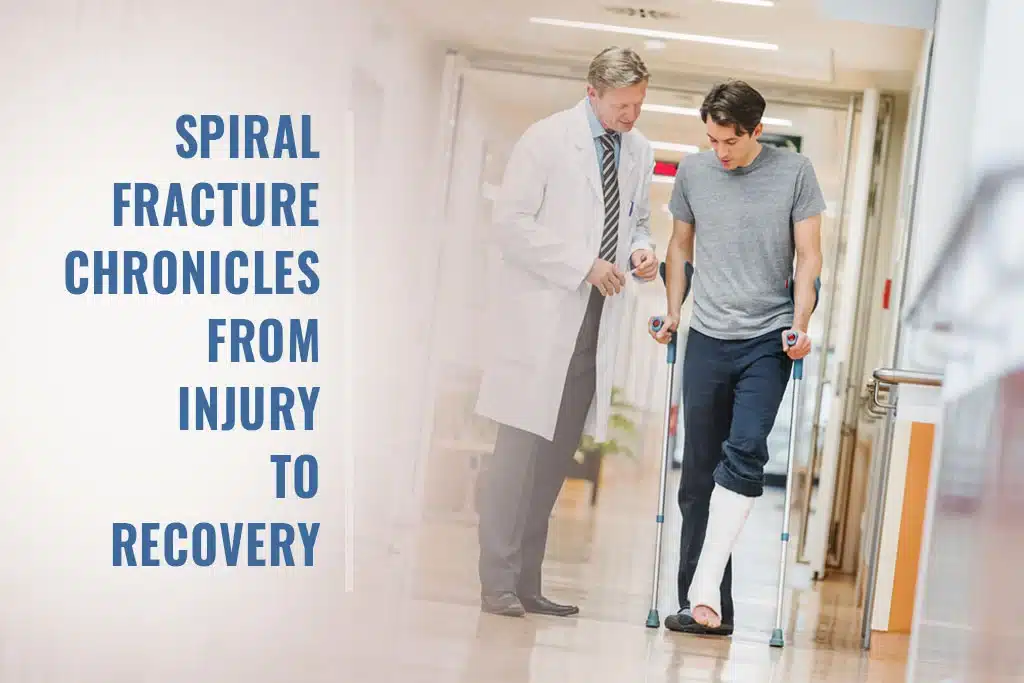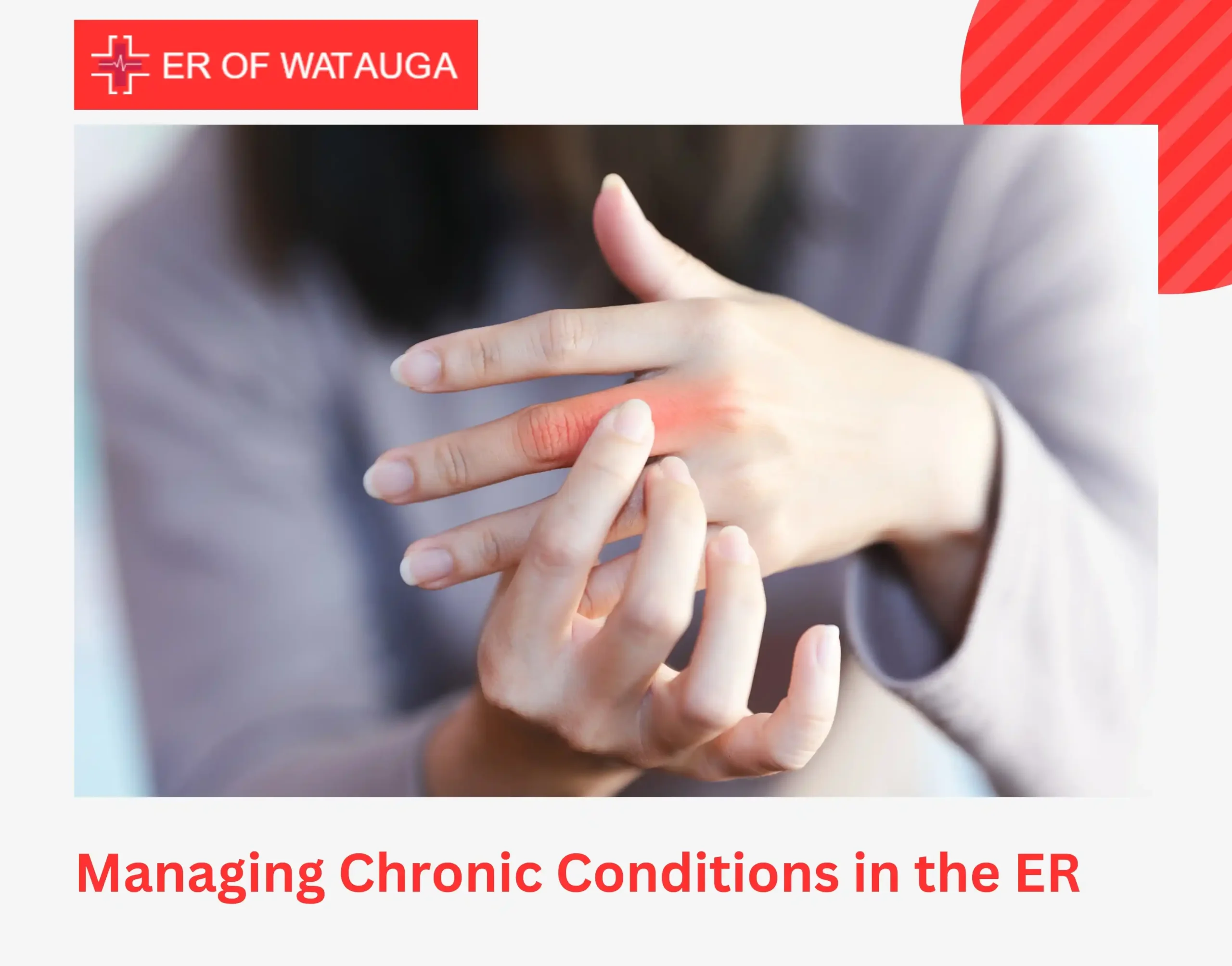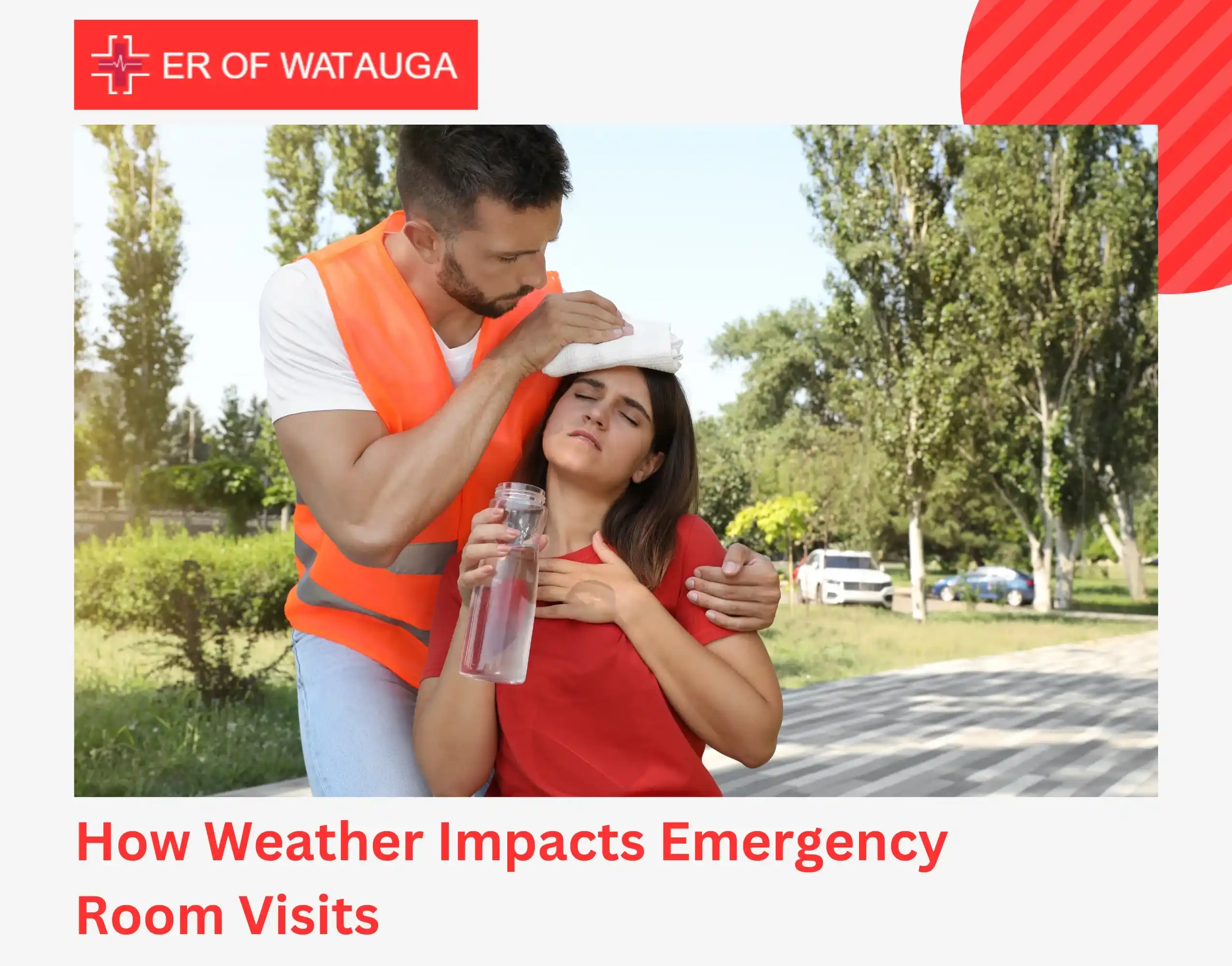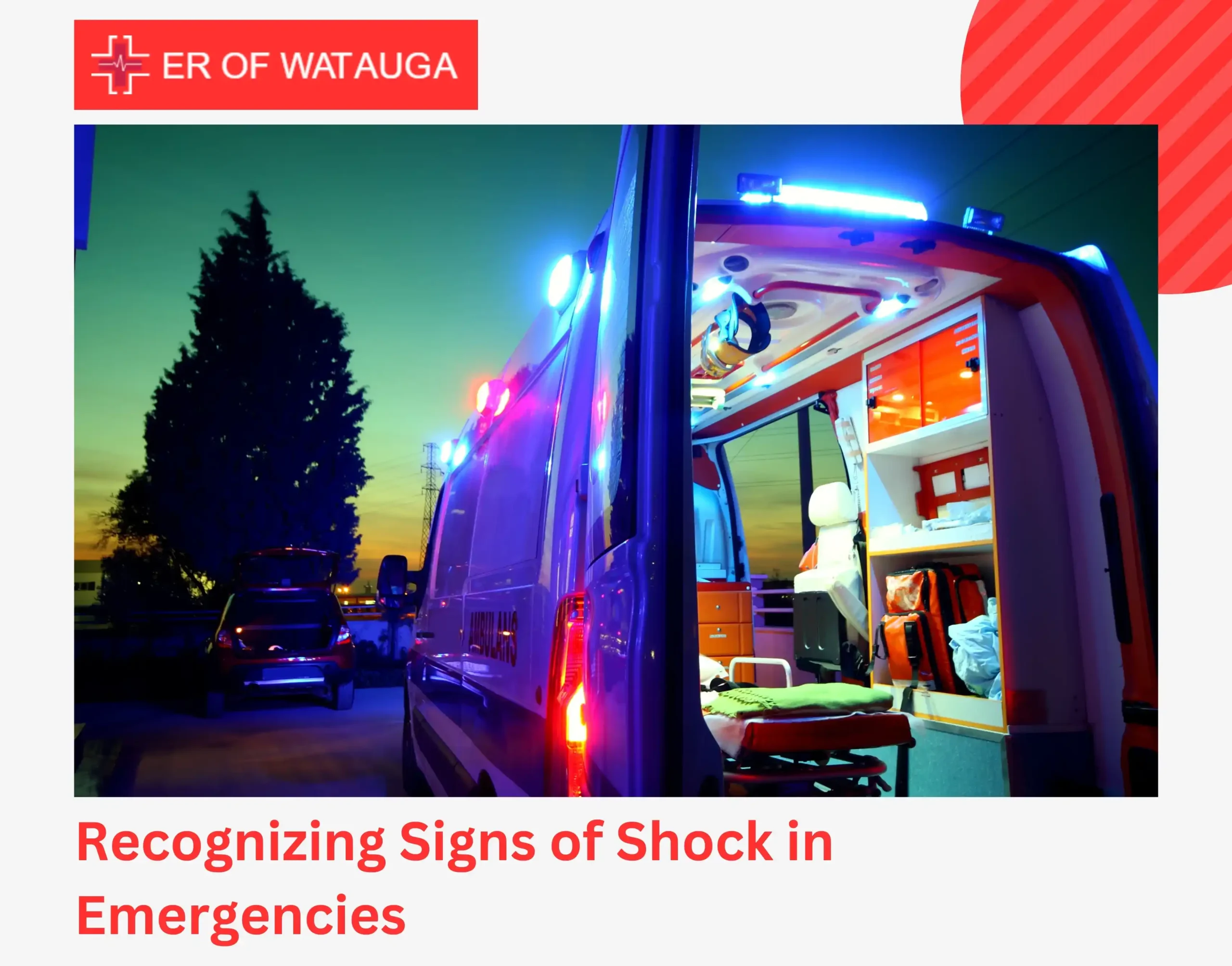Have you ever wondered how to bounce back from a spiral fracture? Let’s explore the guide together from injury to recovery. In this blog, we will help you know how to deal with spiral injuries, how to prevent them, what diagnostic tests should be considered, and what are the expected procedures for spiral fracture recovery.
When a long bone is broken by a twisting force, it results in a spiral fracture. Surgical intervention may be necessary, depending on the extent of the fracture. Spiral fracture recovery typically involves a combination of surgery, rest, and physical therapy. ER of Watauga is your go-to healthcare provider offering a comprehensive range of diagnostic tests, effective treatments, and specialized care. You can rely on us to acquire unmatched care for spiral injuries.
What is a spiral fracture?
Spiral fracture refer to a class of fractured bones. These happen when your bone is broken with a rotational motion in which they tend to set in a significantly misaligned way. The heel breaks to form a cylindrical shape that is screw-like in the bone. Through reading this you will come to know spirally fractures are mentioned as complete fractures. It is then that the anatomy of the fracture becomes complete – the fracture line travels right through the bone.
Spiral fractures usually affect long bones in your body. Some of the most common include:
- Femur (thigh).
- Tibia (shin).
- Fibula (calf).
- Talus (ankle).
- Humerus (upper arm).
- Radius and ulna (forearm).
- Phalanges and metacarpals (fingers and hand).
Spiral injuries are almost always acutely caused by falls from heights or other traumatic occurrences. Your bone might be operated to be fixed. Life can be unpredictable and expensive at the same time. There is no uniform time frame for full recovery that applies to all types of fractures, whether they occur in one bone or a few bones, and also the reason why they happened is important. Most people after all need about 2 months to repair a spiral fracture.
Spiral fractures vs. greenstick fractures
The principles of spiral fractures and greenstick fractures are the bases of bone fractures. They are the words that reveal the specific details about the structure of your bones, how they are actually broken, where they are actually broken, and the appearance of the interior of these bones, from the inside of your body, which is actually broken, right now.
Twisting cracks develop when the breaking of the bone circles along its length – it may seem like climbing a spiral staircase. These can happen in falls, accidents, and contact sports when you might bend your bones with great force (Football players tend to use their bodies to perform this kind of torque).
The greenstick fracture (adesmoince fraction) is a type of breakage where the twisted or bent bone bends only partially and does not break all the way through. While many people have probably attempted to snap sticks in half using their own strength and found their efforts to be futile, they would not likely notice the difference when viewing breaks in a dry vs. a green stick. Partial cracks with a part of the bone continuing to move are called greenstick fractures while complete fractures are when everything cracks apart. The category of greenstick fractures is colloquially called when children fracture their bones more often than adults do.
Spiral fractures vs. toddler fractures
Toddler fractures are spiralled to type and they are the ones which can be seen almost exclusively in children age 3 or less. At the hip, femoral neck fractures made mostly by low-energy traumas account for about 80% of all pediatric hip injuries. [The majority of pediatric hip injuries, about 80%, are fractures of the femoral neck—which typically occur due to low-energy trauma.]
Regardless of the label they put on your fracture, the main factor to keep in mind is going for a healthcare consult upon your opening of the symptoms to avoid a delay in treatment.
How common are spiral fractures?
A spiral fracture is rare. Since it usually occurs as the result of traumatic motion recreation fans rarely experience them and therefore fractures of this type are much less common than other injuries to the bone.
Who gets a spiral fracture?
Spiral fracture, though like with all other bone fractures, can harm anyone. To be exact, this is especially considered real since they are usually accidental or trauma-related. Falls can turn a simple or a non-simple fracture into a spiral fracture when each try lands on the same spot. A spiral bone break is one type of foresaid break among others that could occur with a person suffering from osteoporosis.
What are the symptoms of a spiral fracture?
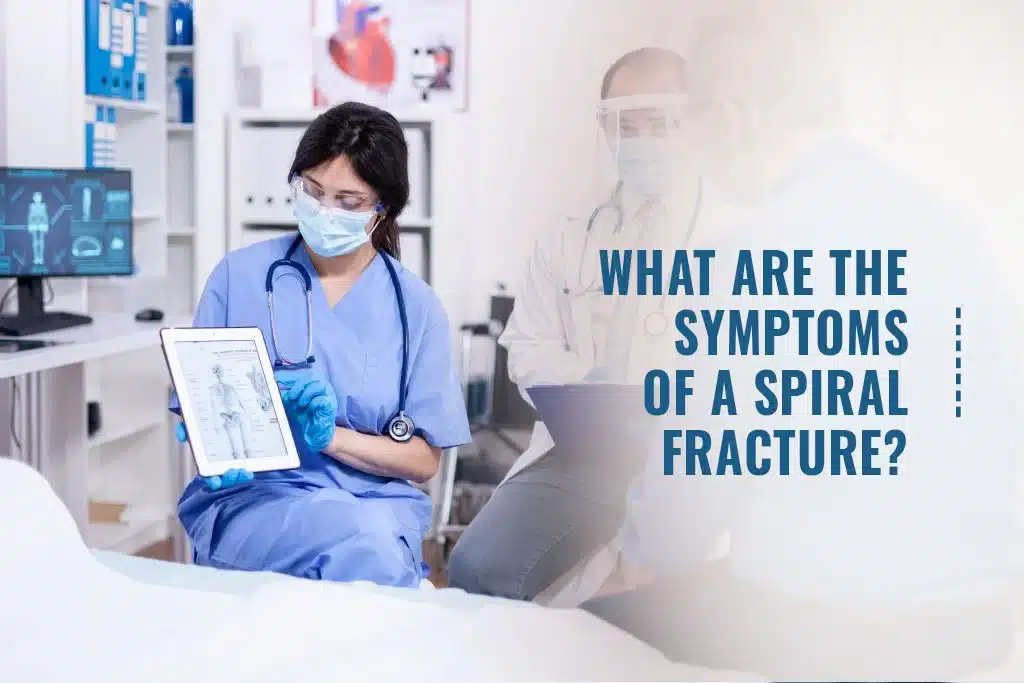
Symptoms of a spiral fracture include
Pain
Swelling
Tenderness
Inability to perform an action that you usually can due to temporary paralysis of the body part you use for it
Bruising or discoloration
An oblong or unwelcome shape that is not the typical
Open vs. closed fractures
The doctor will determine whether or not the fracture is open or closed. Although this is a catastrophic and unpredictable occurrence, having an open fracture is a bone that breaks through your skin. Disruption of normal bone structure in open fractures causes them to take longer to heal and carries a much higher possibility of infections and other post-fracture problems. Dealing with a closed break is way better than dealing with an open one, otherwise, you don’t have your skin and a bone is pushing through that.
Displaced spiral fracture
To be more specific, whether your whole bone isn’t mutually positioned or not, are more the terms your healthcare provider may use to describe your fracture. When the bone splinted is elongated so narrow a distance had been left over around the fracture. This is a dispersed fracture. Non-displaced fractures may be different from broken bones where the bone pieces had not been shifted too much until it was not aligned during the break. When a fracture is forced into a new position hence, surgical repair will become the common option.
What causes a spiral fracture?
Any force that the bones can bear because they are made to bend will cause the bones to break in a peculiar shape. Most of the time this happens when something bumps a particular limb of yours or the body as a whole from its usual position forcing it into a twist. Some of the most common causes include:
Falls
Car accidents
Sports injuries
Workplace accidents
How are spiral fractures diagnosed?
Your healthcare provider will diagnose a spiral fracture with a physical exam and imaging tests.
What tests are done to diagnose a spiral fracture?
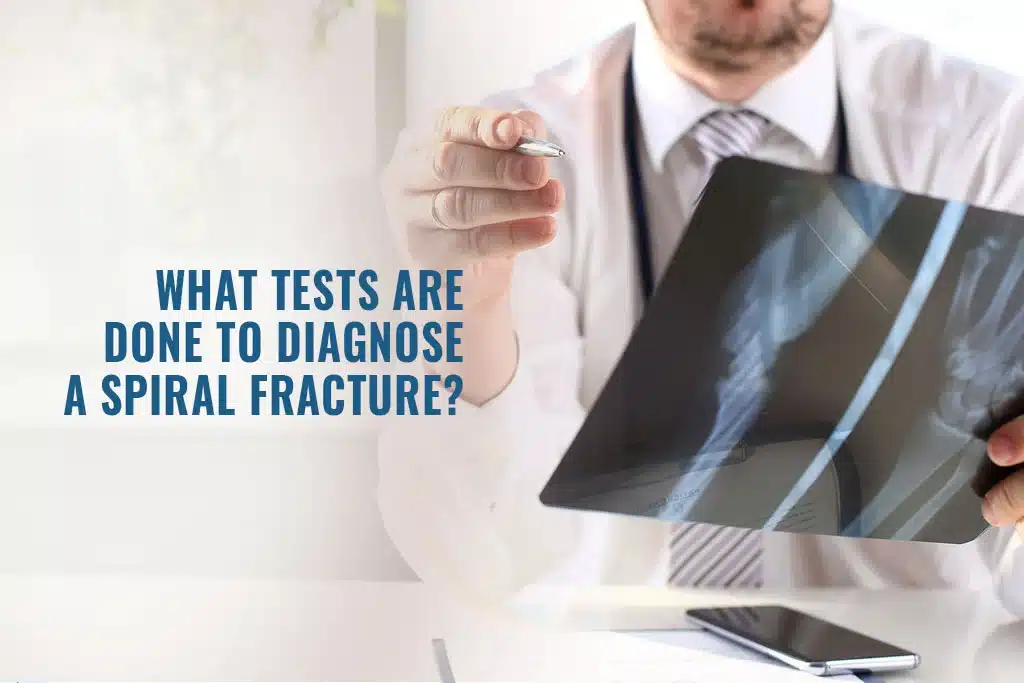
After a physical exam, you’ll likely need at least one of a few imaging tests:
X-rays: Indeed, an X-ray can detect a turn or any other fracture and indicate the degree of damage to the bones.
Magnetic resonance imaging (MRI): When a radiologist investigates your fracture multi-dimensionally, they may use MRI and look into your bones and surrounding tissue areas to learn about the extent of your damage. Well, they’ll be able to notice the tissues surrounding your bones, too. Such examination is vital in identifying the injured tissues, for instance, the muscles, connective tissue, and organs.
CT scan: So, when you have the chance, if there is something defective, for example, in your bones, please make sure your doctor or surgeon knows how much the operation costs. On a CT scan of your bones, the technicians are going to see a more detailed image of the bone and the surrounding soft tissues than on an X-ray.
How are spiral fractures treated?
Whether you are treated or not for spiral fracture usually depends upon the degree of break you had initially and which particular bone is broken. Your upside-down letters require being copied and pasted into their correct order. As to the severity of it and the reason the glass breaks, your medical officials would proceed with some of the treatments.
Immobilization
If it was not bad and the bones did not move so much out of place (if it is non-displaced), the sprain is only recommended in a splint or a cast. In most cases show 3-5 weeks. If a cast is determined, then your stay should be a little longer, usually five to eight weeks. Regardless of the technique, you’ll surely need a subsequent X-ray which will help to keep an eye on the state of your bone regrowth.
Closed reduction
In worse cases, deformities get repaired clinically with a closed reduction to set (realign) your bones. This will be a nonsurgical procedure, and a practitioner would physically introduce pressure and pull to ensure the aligned broken bones inside your body. To prevent you from feeling pain during the procedure, you’ll receive one of the following:
- Local anesthesia to anesthetize the thigh region around your fracture.
- Religious practices also serve as a way out for those experiencing physical distress, whether due to poor health, aging, or pain.
- So you can quickly get to sleep for a complete surgery with the so-called “general anesthesia”.
- The last step of your ankle sprain treatment would be the immobilization of the joint with the help of a splint or cast by your physician.
Spiral fracture surgery
Internal fixation
The most dangerous cracks can’t be fixed without an operation. Create your unique introductory paragraph with the given sentence. The surgeon shall realign (set) your bones in their correct places and then bind them to be immobilized while they heal and rejoin. The surgeons will generally use what professionals call internal fixation. This means that your concerned surgeon will implant pieces of metal into your bone to keep them firmly in position during the healing process.
- Rods: A rod that goes through your bone like you would from the upper to the lower end.
- Plates and screws: Covidividedmetalscrewedinto your bone to hold the parts together tight.
- Pins and wires: With their great strength, pins, and wires keep bits of bone stabilized that cannot be kept in place by other fastening devices. They, especially the rods or plates will be employed simultaneously.
Many individuals thus continuously carry them inside of them. It might also become necessary for you to perform follow-up operations to get rid of the foreign bodies.
External fixation
An external fixation device can be used to augment the bone correction procedure. The surgeon will place the screws or the rods on either side of the fractured bone inside your body, followed by fixtures of outer-body braces, brackets, or staples on the outer bone next to them. This is a short practice which is done usually either with an early repositioning of your fracture or with a rod or a plate for internal fusion after stabilization of fracture.
Bone grafting
In case there is displacement of bone or it is healing poorlyer than it should then, you might receive a bone grafting instead. Your surgeon will drill the remaining bone to form a hole and then insert some bone graft into this hole to bridge the fractured bone. Finally, after that, they normally do an intrafacture an aiding element that is going to hold the pieces together before your bone grows again. Bone grafts can come from a few sources:
- The vertebral bones in the lower part of the spine are the most affected. They stop growing while another group of vertebral bones continues to grow.
- An external donor.
- Artificial replacement piece.
Operation of a spiral fracture is usually patient ambulatory and home the same day; it depends on the bone which has been damaged. If your surgery involves a larger bone such as your femur (thigh) or tibia (shin), you would normally expect to stay in the hospital facility the day or two after the operation.
In the post-surgery stage, your displaced bones will be immobilized, and only the required movement will be permitted. Several days after your doctor has observed that the fracture has healed and gives an okay signal then would be the time when you’ll put some of your weight on it and use the affected limb without the bracing.
What medications are used to treat a spiral fracture?
Intake of OTC NSAIDs such as aspirin or ibuprofen tends to result in bleeding in post-operative periods and other complications. Your surgeon will talk to you about certain medications that lower your post-operative pain.
Complications of spiral fracture treatment

Spiral fracture surgery complications include:
Acute compartment syndrome (ACS): When these micro fractures pile up they form a scaffolding exactly like the way the defect in airplanes form. When the stress exceeds this limit, the blood can not reach the tissue and causes permanent muscle and nerve damage.
Malunion: This is a case where broken bones do not align well while they heal and at the later stage, the healing process causes a disfigurement in your bones.
Nonunion: The repairing of the fractured bones will not be one hundred percent or such that it may not even occur.
Bone infection (osteomyelitis): If you have an open breakage (the bone sifts through your skin), it means a higher probability of bacterial infection.
Other internal damage: Fractures that impair the function of the tissue around the injury can also leave the area broken. This includes muscles, ligaments, nerves, tendons, and blood secretions.
Side effects of NSAIDs include:
- Bleeding
- Ulcers
- Stomach pain
- Bowel complications
How soon after treatment will I feel better?
Symptom improvement might occur in a four-week engineered program. The movement capacity for you will vary depending on which type of surgery you received (this means both mechanisms of the surgery and the broken bones). Therefore, approximately 3 weeks after the surgery you should be able to start moving.
How can I reduce my risk for spiral fracture?
Follow these general safety tips to reduce your risk of an injury:
- Always wear your seatbelt.
- Socialize the proper use of protective equipment for all activities and sports.
- Make your house and the room for work shallow and don’t leave their extra rubbish on the ground which could hurt you and others.
- The house has a lot of objects not reaching, using the correct ones in its home will always lead you to the object. Please, never use chairs, tables, or countertops as a support either.
- Follow a diet and an exercise program that may lead to establishing and sustaining good bone health.
- Interestingly, when you are 50 or older and have a bone density test, it is recommended to talk to your provider about the test.
How can I prevent a spiral fracture?
A spiral fracture is generally the result of falling, accidents, or sports injuries and the only way to minimize the likelihood of its happening is to try and take preventive measures such as wearing adequate protective gear when involved in activities that pose risks of fracture.
What can I expect if I have a spiral fracture?
In case, you suffer from a spiral fracture, your recovery will be 100%. Therapeutic measures such as exercises to restore strength and movement function will be required for the particular part concerned.
How long does it take a spiral fracture to heal?
Your success in repairing your fracture depends on the compression of your operation and what treatments you receive. Almost everyone can take only a few months to get back fit after a spine fracture.
There are not dozens of variables that can influence what time it takes your body to heal. Mention to your healthcare provider or the person who performs the surgery what timing you consider appropriate for your particular circumstances.
When should I go to the emergency room?
In case you suspect you have a spiral fracture or any other kind of bone break, you should visit the nearest medical aid care provider as soon as possible without neglecting this question of necessity. Go to the emergency room if you experience any of the following:
- Intense pain
- You can’t change the place where you would usually find everything if you are disabled or you lost the part of your body that you usually can move.
- It feels like something is the equivalent of cutting a part of your body and transplanting it back into its default position or taking something else and reinventing it as is.
- I can see clearly that my bone is underneath my skin.
- Swelling.
- appearing on the exact day and time as the rest of the symptoms besides the bruising.
- Trauma can happen at any time and once you do, go straight to the hospital’s emergency room.
Conclusion
A spiral fracture is a serious physical issue, however, your physician and surgeon can return you to your feet very successfully and fast. Don’t rush your recovery. Just take it easy one step at a time, and don’t be too hard on yourself while you are rebuilding. Discuss with your doctor how you can maintain bone strength and health and have bone density checks as soon as the age of 50 or if osteoporosis is prevalent in your family. ER of Watauga is among the top-notch urgent care providers offering state-of-the-art diagnostic tests, effective treatment plans, and personalized care for a spiral fracture. You can rely on us to acquire unmatched healthcare solutions immediately. Contact us now to book an appointment or to get further information.
FAQs
Can I immediately put weight on my fractured bone?
No, as a spiral fracture possesses low stability, it is notorious for it. A misaligned fracture cannot be healed and a permanent limb deformity may occur when too much weight is put on it. Your doctor will recommend a walking regimen according to which you should walk based on the magnitude of your fracture and the treatment methodology.
For what length of time does a spiral fracture cast typically stay on?
It depends on the fragility of the bone and the healing process. Most often an oblique fracture is made immobile for 4-6 weeks, after which there is a transition to a brace for reinforcement. Your doctor will do X-rays on a regular basis in order to detect the perfect time of cast removal.
Is surgery required for spiral fractures in every case?
Only for some spiral fractures, surgery may not be necessitated. Stable fractures that are almost undisplaced may usually be rejoined scanning another way. While the anatomy of a clean fracture without large bone fragments will need no surgical intervention, the same is not true for displaced fractures with pieces of bone. In such cases, the broken bone may need to be surgically repaired using plates, screws, or rods to align and stabilize it.
After a spiral fracture, what kind of physical treatment will I require?
Physical therapy is the most important factor to be considered for going back to normal activities and muscle strength, stiffness, and the range of motion in the affected limb. The exercises aim at, among others, strengthening muscles, improving joint range of motion, and re-establishing equilibrium and coordination. The specially designed therapy plan will address the unique condition separately and the specific bone fracture that might have serious consequences on health and physical functions.
After a spiral fracture, would I ever be able to play sports again?
Surprisingly, most walking and even high-impact activities do not become unbearable for an individual after a spiral fracture. The human anatomy is capable of adjusting to the situation. This may be different from one patient to another and will be based on the seriousness of the injury, the overall healing process as well as the patient’s condition during recovery. When you are ready to go back to a sports-related event it is recommended to see your doctor or physical therapist for specific advice.
